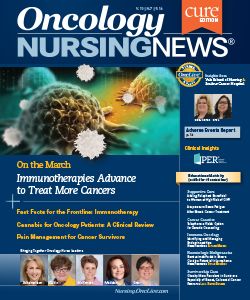Pain Management for Cancer Survivors
ASCO recently released guidelines on pain management for adult cancer survivors, developed by a multidisciplinary working group, this guideline is the first to address the unique pain management needs of cancer survivors.
Although there are more than 14 million cancer survivors in the United States—some of them childhood cancer survivors—as many as 40% continue to experience persistent treatment-related pain. At least 37 causes have been implicated in this pain, and among them are postsurgical sequelae (eg, lymphedema, post-amputation phantom pain), chemotherapy-related toxicities (eg, peripheral neuropathy), hormonal side effects (eg, arthralgias and myalgias), radiation-related adverse effects (eg, plexopathies, fistula formation), and graft-versus-host disease and other complications following stem cell transplantation.
The American Society of Clinical Oncology (ASCO) recently released guidelines on pain management for adult cancer survivors. The multidisciplinary working group, led by oncology nurse Judith Paice, PhD, RN, used the National Cancer Institute’s Office of Cancer Survivorship definition of a survivor (a person with a history of cancer who is beyond the acute diagnosis and treatment phase) in its review of the literature and creation of the guidelines—the first to address the unique pain management needs of cancer survivors, ASCO noted.
Key guideline recommendations include screening for pain at every patient encounter; assessing for the risk of adverse effects of opioids to minimize misuse and abuse; and using nonpharmacologic interventions, such as physical medicine and rehabilitation, integrative therapies (eg, acupuncture), interventional therapies, and psychological approaches, such as hypnosis.
Of note is that some of these recommendations may be nurse-led or guided (eg, meditation, guided imagery, music therapy, distraction, relaxation exercises) or taught to family members (eg, massage, heat/cold application).
Also recommended is using systemic non-opioid analgesics (NSAIDS, acetaminophen) and adjuvant analgesics (selected antidepressants and anticonvulsants) to relieve chronic pain and/or improve physical function, and following state regulations that allow access to medical cannabis or cannabinoids for patients with chronic pain after considering the potential benefits and risks of the available formulations.
ASCO offers several resources and tools to assist practitioners in following these new guidelines on its website. In addition to a link to the full guidelines, published in the Journal of Clinical Oncology, also available are methodology and data supplements, a summary table of the recommendations, patient information about the guidelines, and a set of 23 PowerPoint or PDF slides that can be used for educational purposes.
Oncology nurses can use the guidelines and related resources in a variety of ways. First, we need to assess cancer survivors for the presence of chronic pain and collaborate with other providers in determining the cause of the pain. When pain is present (even minimally), we need to identify strategies that may alleviate the pain. We’ve all cared for patients who view pain as a “tradeoff” for having their cancer cured or in remission, and we need to educate these patients about pain management. In addition, we need to educate the healthcare team, which includes oncologists, radiation therapists, physical therapists, social workers, and pharmacists, about these new guidelines on managing chronic pain among cancer survivors.
Circulate the summary recommendations to staff, and post the recommendations where they can be viewed by staff—and patients! Consider presenting a brief overview of the guidelines using the already-prepared slide deck (only 23 slides!).
If you have a knowledge deficit about a pain management modality, it’s likely that other nurses will as well, so request a formal or informal educational program from the appropriate provider. For instance, invite providers who perform spinal cord stimulation or peripheral nerve stimulation to provide an overview of these pain management modalities. Learn more about the effectiveness of other measures, such as acupuncture, and identify the providers in your institution or community that offer these measures. Lastly, conduct or support the needed research in the area of long-term pain control among cancer survivors.
Reference
Paice JA, Portenoy R, Lacchetti C, et al. Management of Chronic Pain in Survivors of Adult Cancers: American Society of Clinical Oncology Clinical Practice Guideline [published online before print July 25, 2016]. J Clin Oncol.
Lisa Schulmeister, MN, RN, ACNS-BC, FAAN, is an oncology nursing consultant and editor-in-chief of Oncology Nursing News.

Innovative Program Reduces Nurse Turnover and Fosters Development
Published: September 12th 2024 | Updated: September 12th 2024The US Oncology Network (The Network) has developed one of the most comprehensive programs in the nation to support the professional development and retention of new oncology nurses.







